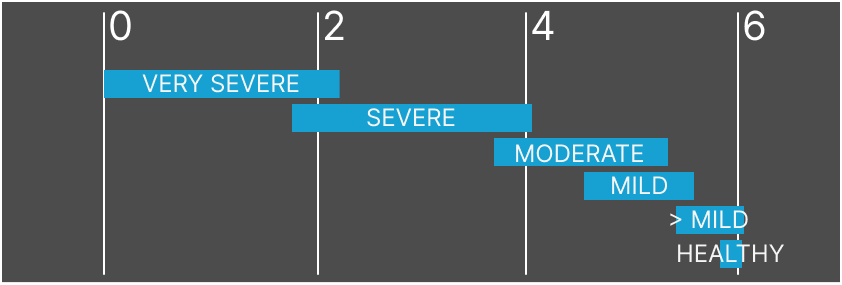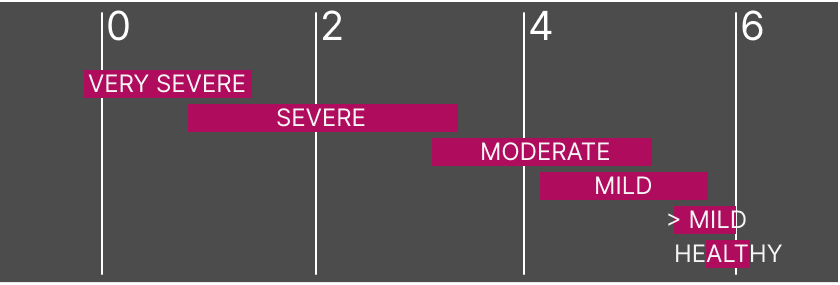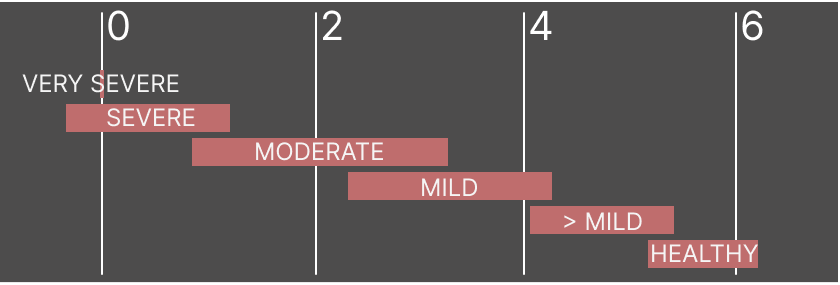ᏆA - Personal hygiene / Basic functions
ᏆB - Walking / Moving around
ᏆC - Being upright
ᏆD - Activities in the home
ᏆE - Communication
ᏆF - Activities outside your home
ᏆG - Reactions to light and sound
ᏆH - Concentration
ᏆAverage score
Severety levels explained:
• Very severe: Totally bedbound and in need of care for basic
functions (19 answers)
• Severe: Mostly bedridden (136 answers)
• Moderate: Mostly housebound (733 answers)
• Mild: At least 50% reduction in pre-illness activity level (360
answers)
• Better than mild: Less than 50% reductionin pre-illness activity
level (15 answers)
Description: Showing Mean (+ - 1 Standard Deviation) A to H
sub-scores and Total Score on the FUNCAP27 questionnaire for the
1263 ME/CFS and 178 healthy control (HC) respondent's classification
of ME/CFS severity as follows:
Very severe: 19 - Totally bedbound and in need of care for basic
functions.
Severe: 136 - Mostly bedridden.
Moderate: 733 - Mostly housebound.
Mild: 360 - At least 50% reduction in pre-illness activity level.
better than mild: 15 - Less than 50% reduction in pre-illness
activity level.
Source: Assessing Functional Capacity in ME/CFS: A Patient informed
Questionnaire. Authors: Kristian Sommerfelt, Trude Schei, Katharine
A Seton, Simon R Carding; Posted Date: 29 September 2023; doi:
10.20944/preprints202309.2091.v1







